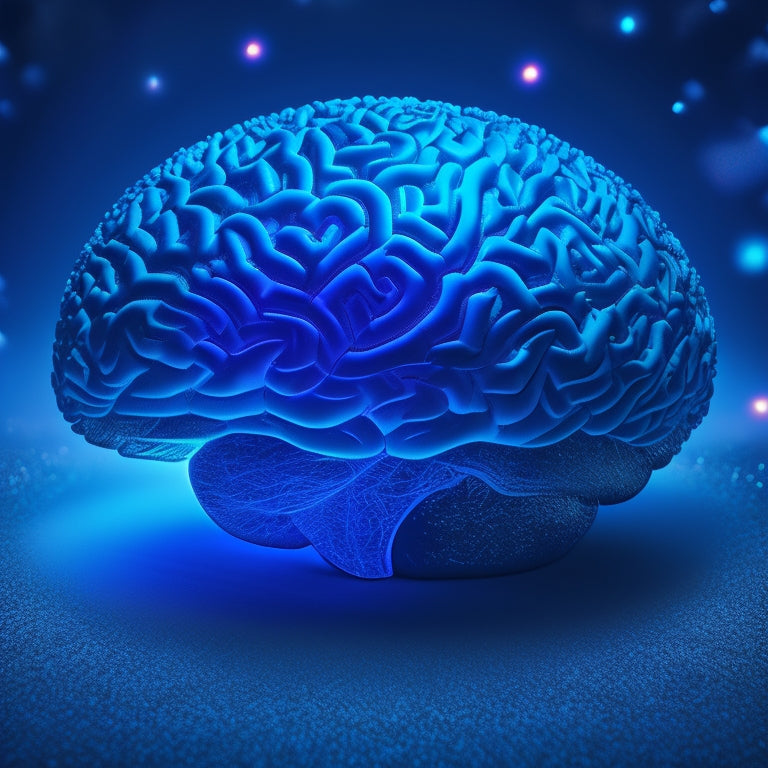
Innovative Math Techniques for Creative Minds
Share
Innovative math techniques that cater to creative minds leverage visual, spatial, and artistic thinking patterns to revolutionize problem-solving. Visual math strategies, tailored to individuals with dyslexia and right-brain dominance, capitalize on the brain's image processing capabilities, enhancing comprehension and improving math skills. Multisensory techniques, hands-on activities, and artistic problem-solving approaches engage creative minds, fostering critical thinking and spatial reasoning. To reveal the full potential of these innovative techniques, it is essential to explore the various strategies and approaches that can be adapted to meet the unique needs of creative learners, ultimately leading to a deeper understanding of math concepts and their applications.
Key Takeaways
• Visual math techniques, such as diagrams and charts, revolutionize problem-solving by capitalizing on the brain's image processing capabilities.
• Multisensory approaches, including hands-on activities and art integration, enhance math comprehension and foster critical thinking in creative minds.
• Right-brain dominant individuals, including those with dyslexia, excel in math with tailored strategies that tap into their unique strengths in spatial reasoning and pattern recognition.
• Interactive lessons, incorporating games, simulations, and multimedia, engage creative minds and cater to diverse learning styles, leading to a deeper understanding of math concepts.
• Innovative math techniques that incorporate art, spatial reasoning, and creative problem-solving strategies can help unlock the full potential of creative minds in mathematics.
Unleashing Visual Math Potential
Harnessing the power of visual math techniques can revolutionize the way creative minds approach mathematical problem-solving, particularly for individuals with strong visual processing abilities, such as those with dyslexia. Visual math strategies capitalize on the brain's propensity to process information through images, making complex concepts more accessible and engaging.
By leveraging visual aids, diagrams, and charts, students can better comprehend and internalize mathematical concepts, fostering a deeper understanding of abstract principles. Dyslexic students, in particular, can benefit from visual math approaches, as they often exhibit strong visual-spatial skills.
Math Strategies for Dyslexic Learners
Dyslexic learners, who often struggle with traditional linguistic and sequential math approaches, can greatly benefit from tailored math strategies that play to their strengths in visual-spatial processing and creativity. By acknowledging their unique cognitive profiles, educators can develop personalized instruction that caters to their needs.
Implementing multisensory techniques, such as manipulatives and visual aids, can enhance comprehension and retention.
Emphasizing problem-solving strategies, rather than rote memorization, can foster critical thinking and creativity.
Hands-on activities, like math-based art projects, can make learning more engaging and interactive.
Nurturing Right-Brain Thinkers
Individuals with a right-brain dominant cognitive profile, characterized by strong visual-spatial skills and creative thinking patterns, can excel in math when provided with opportunities to engage in spatial reasoning, pattern recognition, and innovative problem-solving activities.
This visual learning approach can be particularly beneficial for students with dyslexia, who often possess strong visual processing abilities. By incorporating dyslexia strategies, such as multi-sensory learning and visual aids, educators can tap into the unique strengths of right-brain thinkers.
This can lead to enhanced math comprehension and improved problem-solving skills. By acknowledging and nurturing these creative minds, educators can reveal the full potential of their students and foster a deeper appreciation for mathematics.
Creative Math Approaches Explained
Building on the understanding that right-brain thinkers thrive in math when provided with opportunities to engage in spatial reasoning and pattern recognition, creative math approaches can be designed to capitalize on these strengths.
By incorporating artistic problem-solving strategies, hands-on exploration, and interdisciplinary connections, math can be made more engaging and accessible to creative minds.
-
Incorporating art into math lessons to develop spatial reasoning and visual processing skills
-
Exploring musical connections to math concepts, such as rhythm and pattern recognition
-
Using hands-on exploration and manipulatives to facilitate artistic problem-solving
- Encouraging creative expression and storytelling through math-based projects
Engaging Interactive Math Lessons
Interactive math lessons that integrate games, simulations, and multimedia resources can effectively captivate creative minds by providing an immersive and dynamic learning environment. These engaging lessons facilitate hands-on activities, encouraging students to explore mathematical concepts in a tangible and interactive manner.
Technology integration is a key aspect of interactive math lessons, as it enables the incorporation of digital tools, such as virtual manipulatives and math software, to enhance the learning experience. By leveraging technology, teachers can create personalized and adaptive lessons that cater to diverse learning styles and abilities.
This approach not only increases student motivation and participation but also fosters a deeper understanding of mathematical concepts, making math more accessible and enjoyable for creative minds.
Frequently Asked Questions
How Can I Adapt Math Lessons for Children With Different Learning Styles?
To adapt math lessons for children with different learning styles, incorporate visual aids and hands-on activities to cater to diverse needs, and employ differentiated instruction and personalized learning approaches to foster best understanding and engagement.
What Are the Benefits of Using Real-World Examples in Math Education?
As the age-old adage goes, "an ounce of application is worth a ton of abstraction," and indeed, using real-world examples in math education yields improved understanding and practical application, as students can tangibly relate to and apply mathematical concepts.
Can You Recommend Any Math Games for Homeschooling Co-Ops?
For homeschooling co-ops, I recommend incorporating math board games like Mathdoku and 24 Game, math apps such as Photomath and Mathway, as well as math puzzles and challenges like KenKen and Math Olympiad to foster collaborative problem-solving and critical thinking skills.
How Do I Create a Balanced Math Curriculum for My Homeschooler?
Did you know that 65% of students are visual learners? To create a balanced math curriculum, consider individualized pacing and differentiated instruction, incorporating hands-on activities and project-based learning to cater to diverse learning styles and promote deep understanding.
Are There Any Online Resources for Math Lesson Planning and Organization?
To optimize math lesson planning and organization, utilize online resources such as Homeschool Math Net, Math Power, and Interactive Math Games, which offer adaptable lesson plans and organization tools tailored to diverse learning styles.